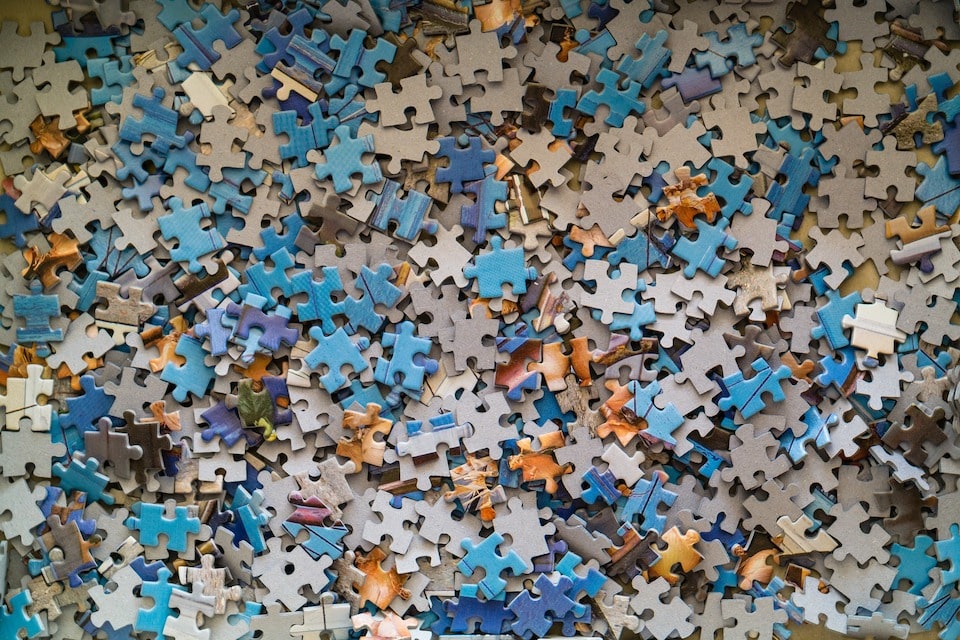Have you ever looked at a 5,000-piece jigsaw puzzle and just wondered how on earth such a wondrous thing was created? It’s a bit of a mystery to many people, but in today’s post, we intend to illuminate our readers and answer their questions on how their favorite puzzles are manufactured.
Like any good jigsaw puzzler, we know that the best place to begin with any good puzzle is at the beginning.
Jigsaw Puzzles: A Brief History
The first jigsaw puzzles were created back in 1762 by a man called John Spilsbury, a map engraver. He first created a map-based jigsaw puzzle where he cut around the countries and formed it into a puzzle he donated to his local school so that children could use it in their geography classes. The idea wasn’t patented, however, and soon the notion caught on and others copied it to create a slew of wooden jigsaw puzzles.
In these early days, people referred to Spilsbury’s creation not as jigsaws, but as “dissection puzzles,” a term that still lingers around today. The name “jigsaw” comes from the special kind of saw that was used to create the puzzles, but that took a long time after dissected puzzles because the jigsaw tool wasn’t invented until the 1880s. Before that, they were cut by hand.
By the early 19th century, the potential for jigsaws as recreational toys for adults was seen and producers began to expand outside of the educational sphere where they had been in the first half-century or so that these puzzles were being made. Certain new technologies and techniques were becoming available that would change the way we see jigsaws forever.
The Lithograph
The first key innovation was the invention of the lithograph in 1796. The special printing technique unique to the lithograph allowed for more complex and sophisticated images and patterns to be applied to the wood’s surface, rather than cruder images simply drawn on in drab colors like those of maps. This meant that a wider range of images could be created that would appeal to a wider audience.
Plywood
Another key innovation was plywood. While it’s true that the history of plywood goes all the way back to the ancient Egyptians, it was Samuel Bentham in 1797 who patented the first machines that could produce veneers and is credited with the first description of what we now consider to be a standard form of plywood. Plywood was important for jigsaws because it was much easier to cut the wood into delicate and intricate shapes. On top of that, plywood was much cheaper.
By the 1850s and 1860s, plywood production went full industrial and it became an abundant and cheap material for all manner of applications, including the creation of jigsaws.
The Treadle Jigsaw
The electric-powered jigsaw cutters we know today were invented just after the Second World War by Swiss engineer Albert Kaufmann. Before that, in the 19th century was a foot-powered version based on the design for the foot-powered sewing machine. The treadle jigsaw cutter allowed the plywood and other materials to be cut even more intricately, once again giving even greater scope to how jigsaws could be made and promoted.
How Modern Jigsaw Puzzles Are Made?
So we can see how jigsaws were made in the old world. It was a case of printing an image onto the wood using the aforementioned lithographic techniques and then cutting the puzzle precisely into individual pieces that could be reassembled. It doesn’t sound complex, but it’s easy to imagine how hard it was, not to mention intricate and time-consuming. Taking an image and carefully cutting it into hundreds of individual pieces must have been difficult work. It also made the puzzles more of a luxury artisanal item.
Nowadays, however, you can find jigsaws in every thrift and charity shop, and sitting in bargain bins and in mountainous piles in toy stores everywhere. How do they make so many of them so fast? Here is the lowdown on the modern production method. For our purposes, we will talk about original jigsaw images as opposed to just photograph versions, but we’ll talk about using photos to create jigsaws in the next section on customized jigsaws.
Step 1: Hand Drawing the Puzzle Motif
The first step is to create what is known as the puzzle motif. This is actually done by hand at first. The drawings are then handed off to a design team that analyzes them and how they might be constructed into a jigsaw design. If they seem viable, they will move forward to the next steps, but if not, then they may be sent back for modification or simply be rejected.
Step 2: Computer Design and Editing
Approved designs then move forward to the more formal design step, which is them being designed using advanced computer software and hardware tools. The latest equipment actually makes computer drawing just as precise and intricate as it is drawing on paper. Once the drawings are completed, they are handed off to a puzzle editor, who will inspect them for accuracy and level of detail.
Checking the level of detail is important because those details are both parts of what makes a puzzle accessible by people being able to identify pieces with matching details, but also makes it more challenging by increasing the level of detail in the final image, which makes placing the pieces all the more intricate and difficult.
Step 3: Printing and Inspection
With designs modified and given final approval, the printing process can thus begin. First, the printing plates are exposed to the design and then fitted into the giant printing machines. These printers process up to 18,000 sheets of paper per hour running over 4 different colors of ink roller. These all eventually come out as a finished picture.
The initial prints will be inspected once again for color quality and consistency. The puzzle has to be precise and any imperfections in color could render it impossible or incredibly difficult and frustrating for puzzlers to complete.
Step 4: Sticking and Cutting
Next, the prints are stuck onto cardboard sheets and piled up with their siblings ready to be sent for cutting. To cut each puzzle, the toolmakers create what is known as a “master dice.” It’s a cutting tool that can be used to cut all puzzles of that same size. Each master dice is made for a single puzzle and involves up to 400 hours of labor to create. The cutting blades are placed all across the pattern, and then the cardboard is placed beneath the dice before being cut.
The individual piece shapes for the dice are computer designed, and then laid out on a flat surface into which the dice cutter blades can be hammered in place.
Step 5: Bagging and Boxing
The cut puzzle now looks like a complete jigsaw after being punched by the master dice. The pieces are then separated in another machine before being bagged, boxed, wrapped up in shrink wrap, and then shipped off to stores everywhere.
How to Create Your Own Customized Jigsaw Puzzles

And that, in a nutshell, is how a jigsaw is made! The modern world has also given rise to the trend of customized jigsaws where makers will create individual puzzles based on photos that you send to them. You can then send them as gifts to friends, family, and other loved ones. What makes them even more interesting is that some providers give you the option to make the jigsaw without a picture on the box. What a lovely way to surprise a relative who loves puzzles than with a challenging photo puzzle that turns out to be of the last time they went fishing or spent a holiday together.
Jigsaws continue to bring families together in the spirit of problem solving and fun. Let’s hope they continue to be made en masse!

